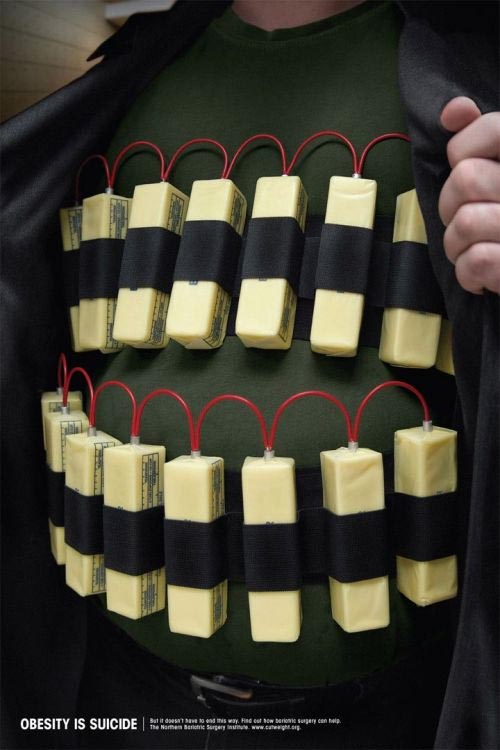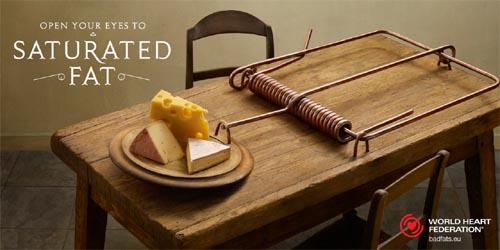Inputting together an advertising campaign for a particular product or service, advertisers are typically only focused on how that advertisement can work to better promote their product or service over their competition. Most often, they are so focused on how to sell their product that they forget to pause and consider how their latest scheme might positively or negatively affect society. “Broadly speaking, the media exist in a very close, sympathetic relationship to power and established values. They favor a consensus view of any problem: they reflect overwhelmingly middle-class attitudes and experience” (Hall, 1974).
Subtle clues within the action or image can indicate how people react to specific behaviors that may be receiving a new definition thanks to the advertisements created. These types of advertisements frequently play on the side of dark humor, serving to entertain and retrain social standards at the same time. Occasionally, the effect a particular advertisement might have on the public is the primary focus of the ad with the product a perceived secondary reference.
In other cases, the focus remains on the product or service itself with the social message a secondary effect. To examine how rhetoric is used in advertising, two ads promoting weight loss are examined, one intended for an audience looking to lose weight the fast and effortless way from the Northern Bariatric Surgery Institute and the other intended to encourage people to eat healthier from the World Heart Foundation.
Both of these ads are focused upon weight issues and rely upon images to impart their message. “Inductive reasoning takes a specific representative case or facts and then draws generalizations or conclusions from them. Inductive reasoning must be based on a sufficient amount of reliable evidence, in other words, the facts you draw on must fairly represent the larger situation or population” (Weida, 2007).
The bulk of the message in both of these advertisements is contained in the image, striving to elicit emotional responses from their viewers. According to Weida (2007), emotional appeals are usually made to “paint a more legitimate and moving picture of reality or illuminate the truth.” While most associate these appeals with specific words, these advertisers rely on a combination of powerful images and few words used simply to direct the line of thought.
The first ad focuses on the center section of a supposed suicide bomber, complete with butter-stick bombs plastered across his chest and the accompanying words “Obesity is Suicide.” The second ad presents a human-scale mousetrap as a rustic table and the appeal to “open your eyes to saturated fat.” While the first of these advertisements is attempting to sell a service, bariatric surgery as a means of weight loss, the other is focused on a public health message. This difference becomes clear following rhetorical analysis.
The first advertisement features the image of an obviously overweight male torso. The hands of the man hold open a dark shirt to expose the T-shirt and wired double sticks of butter strapped around him like the sticks of dynamite a suicide bomber might use. The text of the ad proclaims “Obesity is suicide” and, in smaller letters “but it doesn’t have to end this way” (Northern Bariatric, 2008). This ad is taking the known fact that consuming large quantities of fat and cholesterol can lead to overweight and obesity as well as the known fact that obesity can lead to heart attack, stroke, and death and generalizing these to its ultimate end conclusion.
However, this ad has taken the slippery slope approach to rhetoric. The slippery slope “is a conclusion based on the premise that if A happens, then eventually through a series of small steps, through B, C,…, X, Y, Z will happen, too, basically equating A and Z. So, if we don’t want Z to occur A must not be allowed to occur either” (Weida, 2007). This mistake could have been avoided had the advertiser avoided the suggestion of an absolute. “We’ve all heard ‘never say never’; any totalizing statement is likely to result in a fallacy. But words like ‘don’t’ and ‘must’ creep in and can give a writer’s statements and indisputable air” (Myers, 1999).
The image/text combination suggests that obesity equals death with the same kind of immediacy one would feel upon facing a suicide bomber. As if the image itself were not scary enough, the associations encouraged by the text create an immediate personal threat and thus frightens the overweight person into researching the viability of the service offered.
The other advertisement presents a surprising image for the viewer depending upon how they first view it. At first glance, it can either appear to be a large mousetrap complete with a plate of appetizing cheese or it can be seen as a rustic dining table and chairs set with an appetizing plate of cheese as well as a suspicious metallic contraption. “Humor has a great way of defusing our critical faculties. Not that it’s bad in itself; it should just raise a red flag lest we go too far down the garden path on which someone wants to lead us” (Myers, 1999). The surprising nature of the image is brought into focus with the accompanying text, “Open your eyes to saturated fat” (World Heart Federation, 2008).
The two words ‘saturated fat’ is much larger than any of the other text on the page, facilitating an instant link between the concept of saturated fat and the dismal end of a mouse caught in a mousetrap. While somewhat humorous, the image is disconcerting as one contemplates the kind of animal that would be caught in this trap, and people begin to make connections with the way they sometimes feel about their food or weight. Thus, the rhetoric used in this advertisement depends upon the creation of an anecdote. Anecdotes “cast an issue in a favorable or unfavorable light, or can highlight or suppress certain aspects.
They work by suggesting a likeness between a character and the listener, or a situation and the listeners. What is emphasized or suppressed is key” (Myers, 1999). The advertisement avoids creating a rhetorical fallacy because it does not make any absolute claims. If you avoid the cheese enough, you may be able to avoid the snap of the trap, the snap of the trap may or may not kill its captive and there are obviously extenuating circumstances that may help one avoid the trap, such as if someone else were in the room as suggested by the second chair. The end message is one of warning and encouragement for smarter decisions rather than an insistence to rush out and buy a product.
A strong understanding of common rhetorical strategies used in advertising helps to understand how the advertisers are eliciting a particular response. Even when text is at a minimum and image is depended on for most of the message, rhetorical arguments can be traced. Understanding the inductive reasoning included in the above ads leads to further understanding of how this reasoning is either supported or negated by further rhetorical structures.
In addition, the inclusion of rhetorical fallacy in the Northern Bariatric advertisement can be seen to be an intentional exaggeration in order to develop a sense of urgency and immediacy. This sense of immediacy is hoped to drive greater viewer response resulting in higher profits for the company. The advertisement for the World Heart Federation, on the other hand, is able to focus on creating a strong and compelling argument without the need for exaggerating immediacy and instantaneous response. It is used as a means of communicating safer eating habits and encouraging viewers to consider carefully what they are about to eat.


References
Hall, Stuart. (1974). “Black Men, White Media.” Savacou, Journal of the Caribbean Artists’ Movement. Vol. 9/10. Cited in “Revealed: How UK Media Fueled Race Prejudice.” (2001). Chronicle World. Web.
Myers, Gene. (1999). “Persuasive Words, Logical Fallacies and Intent Signals.” Rhetoric. Washington: Huxley College of Environmental Studies: Western Washington University. Web.
Northern Bariatric Surgery Institute. (2008). [Advertisement]. Web.
Weida, Stacy. (2007). “Using Rhetorical Strategies for Persuasion.” The Owl at Purdue. Purdue University. Web.
World Heart Federation. (2008). [Advertisement]. Web.